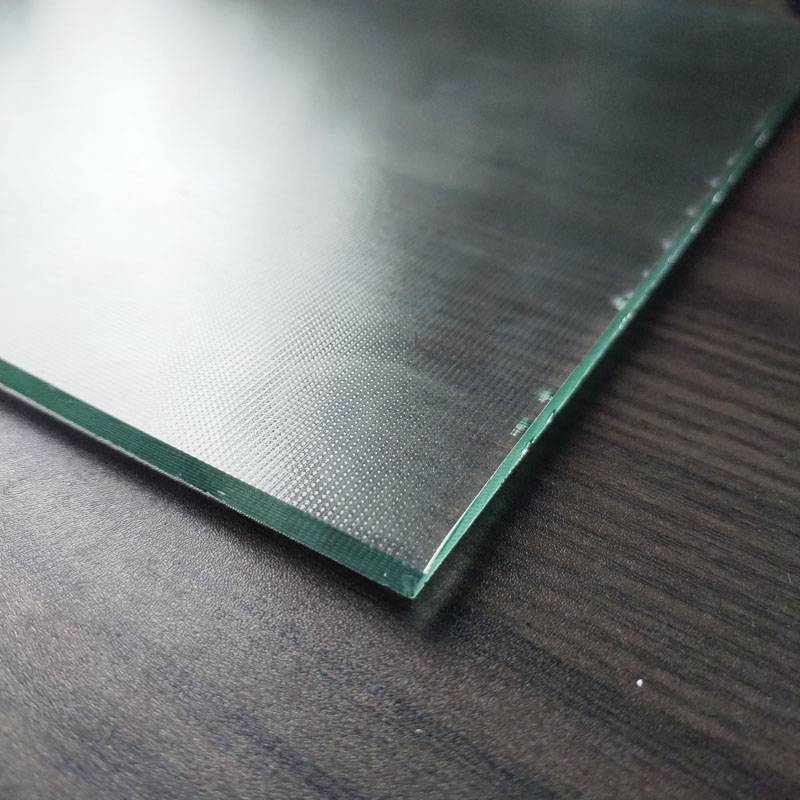The Manufacturing of Tempered Glass A Comprehensive Overview
Tempered glass, also known as toughened glass, is a type of safety glass that has been treated through controlled thermal processes to increase its strength compared to standard glass. The manufacturing of tempered glass involves several critical steps that ensure its durability and safety, making it a popular choice in various applications, including architecture, automotive, and interior design.
The first step in the manufacturing process is the selection of raw materials. High-quality silica sand, soda ash, and limestone are primarily used to produce the glass. These materials are carefully mixed and melted in a furnace at temperatures exceeding 1,600 degrees Celsius. This melting process produces a molten glass that is uniform in composition and free from impurities.
Once the glass has melted, it is formed into sheets using different techniques, such as float, casting, or pressing. The float glass method is the most common; it involves pouring molten glass onto a molten tin bath, where it spreads out and forms a flat sheet. After forming, the glass sheets are cooled to room temperature slowly in a process known as annealing. This slow cooling is crucial to alleviate internal stresses within the glass, setting the stage for the next step.
manufacturing of tempered glass
After the glass sheets have been produced, they must be cut to the desired dimensions. Precision cutting machines are used to ensure the glass is trimmed accurately, as any imperfections can affect the structural integrity of the final product. Once cut, the edges of the glass are often polished to remove sharp remnants and prevent chipping, enhancing both safety and aesthetics.
The crucial step in the manufacturing of tempered glass is the heat treatment process. The cut glass sheets are heated in an oven to temperatures between 600 to 700 degrees Celsius. This rapid heating process causes the surface of the glass to expand while the interior remains cooler. After the glass reaches the desired temperature, it is rapidly cooled using high-pressure air in a process known as quenching. This sudden cooling creates a compressive stress on the surfaces of the glass while inducing tensile stresses in the core, ultimately resulting in a product that is up to five times stronger than untempered glass.
Once the tempered glass has been produced, it undergoes rigorous quality control testing to ensure it meets safety standards. Various tests, including impact resistance and thermal stress tests, are conducted to confirm the glass can withstand force and thermal fluctuations. Only after passing these stringent tests is the tempered glass deemed ready for distribution.
In conclusion, the manufacturing of tempered glass is a complex and precise process that ensures the production of a strong, durable, and safe product. From the careful selection of raw materials to the heat treatment that imparts its strength, each step in the production process is vital. As industries increasingly prioritize safety and durability, the demand for tempered glass continues to rise, solidifying its importance in modern construction and design.
 Afrikaans
Afrikaans  Albanian
Albanian  Amharic
Amharic  Arabic
Arabic  Armenian
Armenian  Azerbaijani
Azerbaijani  Basque
Basque  Belarusian
Belarusian  Bengali
Bengali  Bosnian
Bosnian  Bulgarian
Bulgarian  Catalan
Catalan  Cebuano
Cebuano  Corsican
Corsican  Croatian
Croatian  Czech
Czech  Danish
Danish  Dutch
Dutch  English
English  Esperanto
Esperanto  Estonian
Estonian  Finnish
Finnish  French
French  Frisian
Frisian  Galician
Galician  Georgian
Georgian  German
German  Greek
Greek  Gujarati
Gujarati  Haitian Creole
Haitian Creole  hausa
hausa  hawaiian
hawaiian  Hebrew
Hebrew  Hindi
Hindi  Miao
Miao  Hungarian
Hungarian  Icelandic
Icelandic  igbo
igbo  Indonesian
Indonesian  irish
irish  Italian
Italian  Japanese
Japanese  Javanese
Javanese  Kannada
Kannada  kazakh
kazakh  Khmer
Khmer  Rwandese
Rwandese  Korean
Korean  Kurdish
Kurdish  Kyrgyz
Kyrgyz  Lao
Lao  Latin
Latin  Latvian
Latvian  Lithuanian
Lithuanian  Luxembourgish
Luxembourgish  Macedonian
Macedonian  Malgashi
Malgashi  Malay
Malay  Malayalam
Malayalam  Maltese
Maltese  Maori
Maori  Marathi
Marathi  Mongolian
Mongolian  Myanmar
Myanmar  Nepali
Nepali  Norwegian
Norwegian  Norwegian
Norwegian  Occitan
Occitan  Pashto
Pashto  Persian
Persian  Polish
Polish  Portuguese
Portuguese  Punjabi
Punjabi  Romanian
Romanian  Russian
Russian  Samoan
Samoan  Scottish Gaelic
Scottish Gaelic  Serbian
Serbian  Sesotho
Sesotho  Shona
Shona  Sindhi
Sindhi  Sinhala
Sinhala  Slovak
Slovak  Slovenian
Slovenian  Somali
Somali  Spanish
Spanish  Sundanese
Sundanese  Swahili
Swahili  Swedish
Swedish  Tagalog
Tagalog  Tajik
Tajik  Tamil
Tamil  Tatar
Tatar  Telugu
Telugu  Thai
Thai  Turkish
Turkish  Turkmen
Turkmen  Ukrainian
Ukrainian  Urdu
Urdu  Uighur
Uighur  Uzbek
Uzbek  Vietnamese
Vietnamese  Welsh
Welsh  Bantu
Bantu  Yiddish
Yiddish  Yoruba
Yoruba  Zulu
Zulu 

